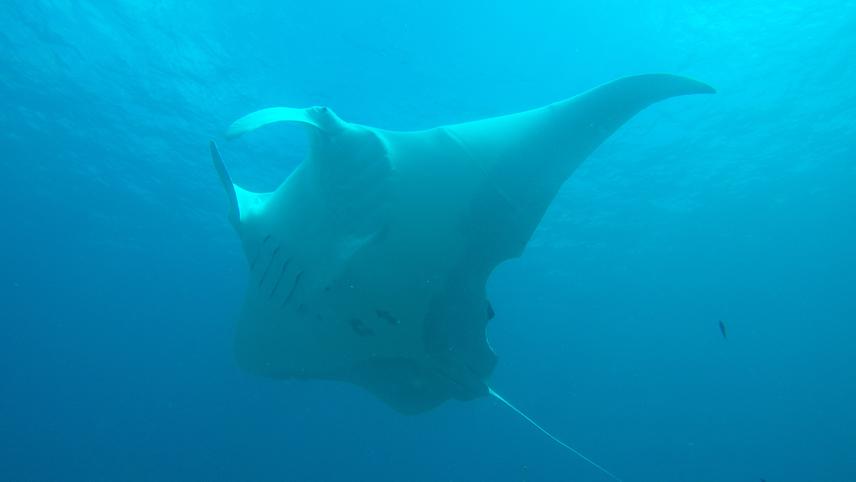Sila Kartika Sari
Manta rays are protected in Indonesia but represent incidental captures in artisanal drift gillnet fisheries. In order to reduce mortality, we propose (1) to assess best-practices for releasing manta rays from gillnets to optimize their post-capture survival, (2) identify key hotspots of overlap between the habitat of oceanic manta rays Mobula birostris and these fisheries in East Flores, and (3) provide realistic recommendations for policy change that support the conservation of manta rays in Indonesia by providing science-based management recommendations. One approach to reducing the mortality of vulnerable sharks and rays is to release them from nets after capture, however, the mechanisms responsible for elasmobranch survival in fishing gear are not well understood (Dapp et al., 2016), and no such information is available worldwide for mobulids caught in gillnets, which we aim to provide.

East Flores in the Savu Sea provides migratory corridor, foraging ground and nursing ground for 22 species of marine mammals (MMPATF, 2019a), and home for thousands of Mobulid ray (Lewis et al., 2015). However, Lamakera villagers in East Flores is infamous as the world’s largest manta fishery, where hundreds of Manta and Mobula rays were landed annually in this small Indonesian village to supply the global demand for Mobulid products.
Since the conservation intervention in 2014 by local government which collaborated with NGOs, targeted manta fishery has decreased by targeted 97 % (Misool Foundation, 2019). However, despite the almost 100% reduction in targeted Manta hunting in Lamakera, this work in the region has highlighted another significant threat (bycatch from gillnet fishery) that might impact Manta and Mobula populations in the East Flores region. Based on Misool Foundation data, the numbers of Mobulids (Mobula mobular) catch from gillnet fishery has increased up to 6 times higher than before. Furthermore, survival of bycaught elasmobranchs is species-specific and is influenced by size, respiratory mode, fishing gear type, capture duration, behaviour during capture (i.e. fight), air exposure duration (see Bagarran-Mendez et al., 2019).
We aim to identify what variables affect Manta ray survival in gillnets at a manta ray bycatch hotspot in East Flores, as a basis for reducing mortality through better management measures in Indonesia, but with potential conservation benefits for other high-risk countries, such as Peru, Sri Lanka, and the Philippines (Lawson et al., 2017). This information is highly relevant to identify specific measures to be implemented in fisheries management, such as soak durations and handling guidelines.
In order to quantify post-release mortality, satellite tags (n=20) will be opportunistically tagged to Oceanic manta rays as bycatch in gillnet fisheries during normal fishing operations. These tags are designed for short-term survivorship studies and will be popped-up to the surface after the death of the animal or once the animal has survived for the maximum deployment timespan of 60 days. Socio-eonomic surveys will be conducted with different levels of the supply chain which will provide insight into trends in fisheries and socio-economic value. Habitat use will be analysed using summary data from satellite tags to predict overlap with fisheries and or identify bycatch hotspots.
Our project will contribute to new policy frameworks ultimately setting in place management measures that will result in a reduction of manta ray fisheries mortality in non-selective gear.